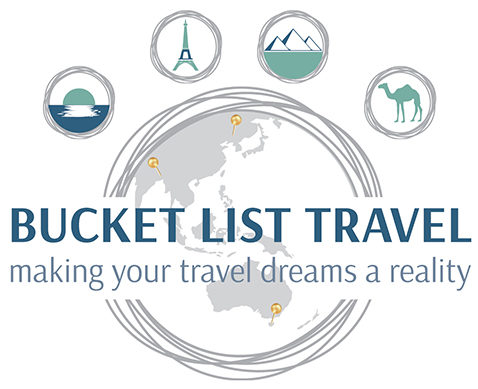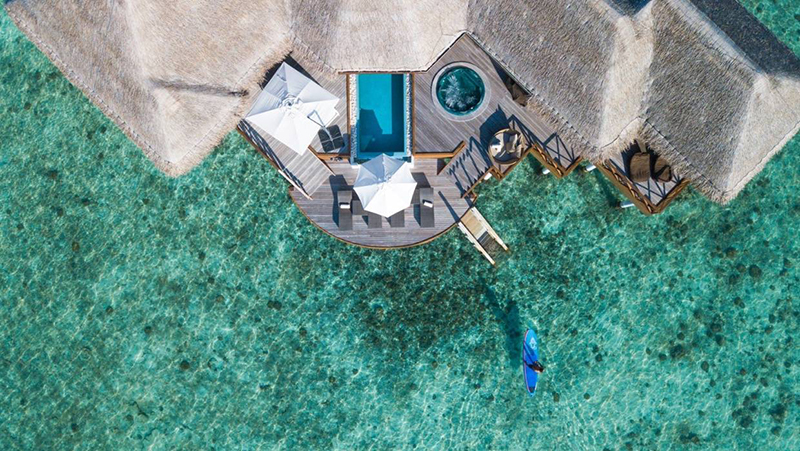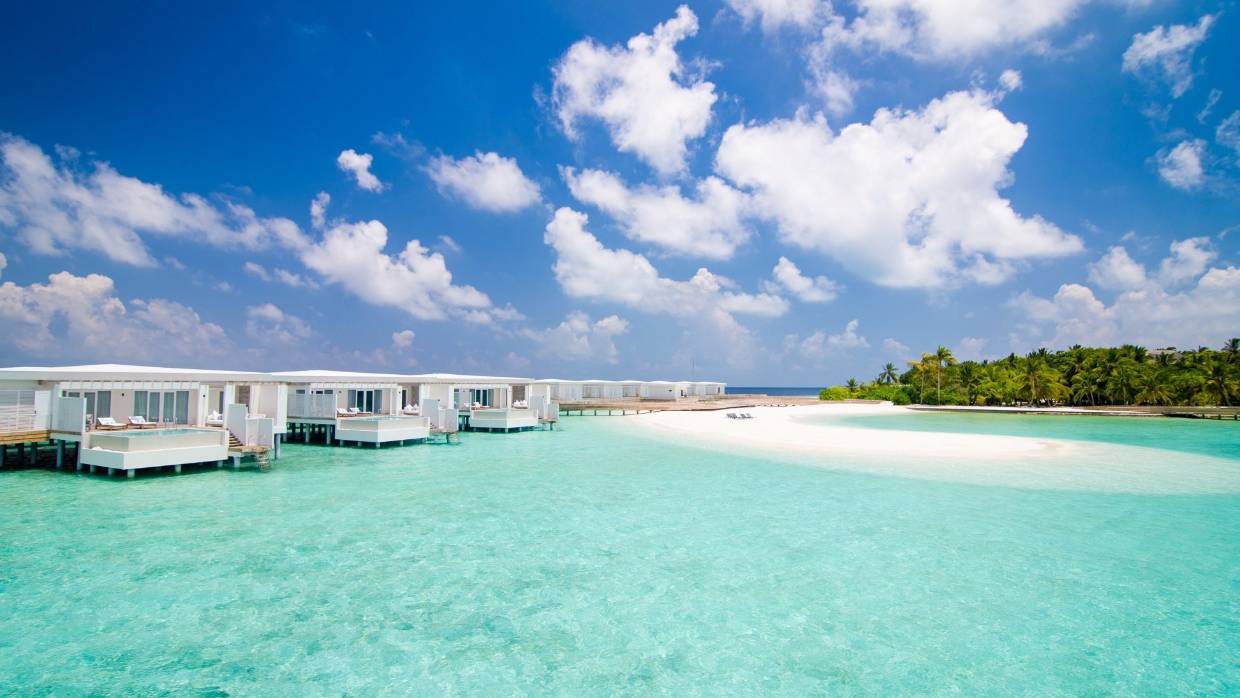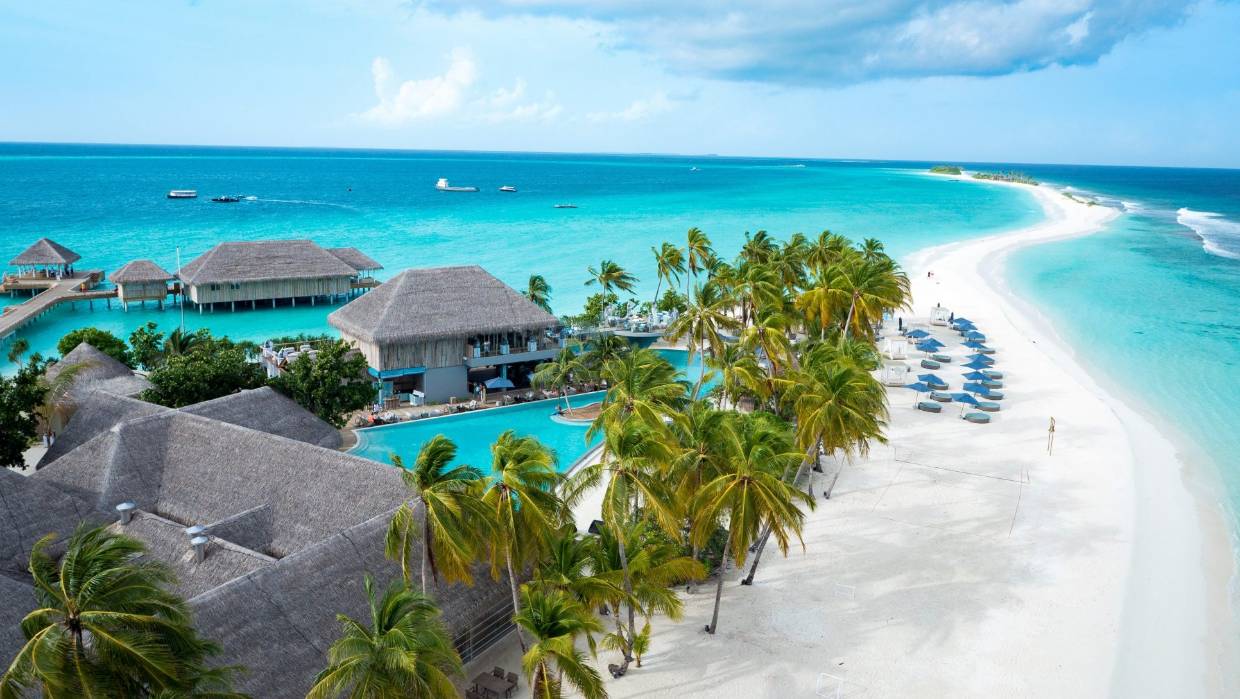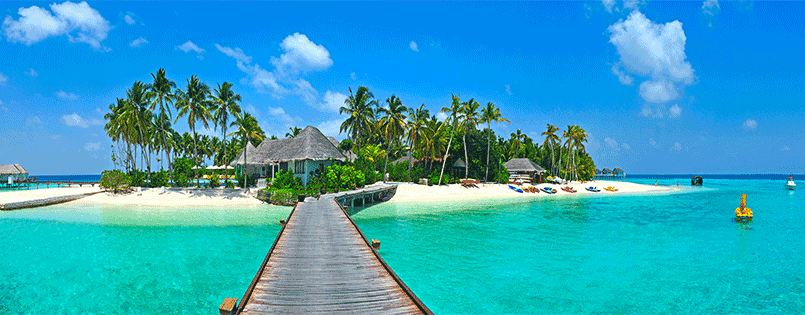Once in a lifetime bucket list experiences
If heaven on earth exists, it is the Maldives
This featured destination is one that I have luckily just been able to experience first-hand. When I talk to people about their bucket list destinations, The Maldives is a place that it is always in the top 10, if not top 5, of their dream places. If you can picture azure-blue waters, powder-white sand, luxury accommodation, fine food, warm evenings in glamourous cocktail lounges, luxurious ocean villas, stylish beach resorts, overwater bungalows, water sports and relaxation, then The Maldives is the exotic destination you need to get to.
Enough sitting, wishing and waiting. The only way to find out what all the fuss is about is to go and check it out for yourself. Get there and make some new memories at one of the most picture-perfect countries in the world.
Oh …. and if you need any further kind of encouragement to get you to take that dream trip to the Maldives, it’s disappearing due to climate change and rising sea levels. In fact, over 100 islands have already disappeared.
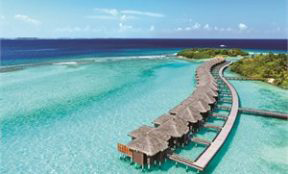
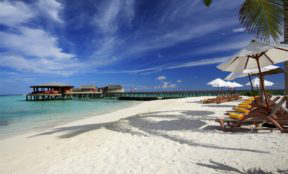
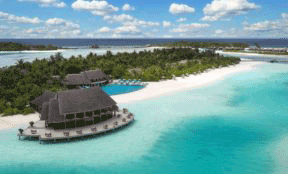
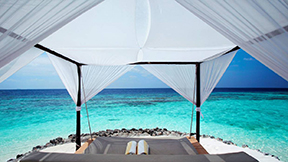
Where are The Maldives?
One of the smallest countries in the world the Maldives is a garland of 26 atolls and 1,192 islands over 90,000 square kilometres in the middle of the Indian Ocean. It is located to the south west of India and Sri Lanka. Only about 200 of the islands are inhabited. The Maldives is the lowest country in the world: its highest natural ground level is only 2.4 metres above sea level.
The culture and people
The local culture is influenced by its proximity to India and its conversion to Islam in the 12th century. The Maldives is a Muslim country and their laws are enforced strictly in the capital Malé, but not on the resort islands. Tourists, while at the resort islands, are free to drink alcohol, eat pork, canoodle, and wear bikinis, spaghetti-strap tops, dresses, and shorts. But if you take a day trip to a local island, you’ll be expected to follow the local customs, particularly when it comes to women’s attire.
The people in Maldives are quite diverse. You will find a little bit of everything, like hints of Africa, South Asia and Southeast Asia.
Island life
Setting itself apart from other beach destinations, the archipelago nation has over 100 resorts, most of which are located on their own private islands. Once thought of only as a honeymoon destination for couples, the Maldives is now a once-in-a-lifetime island destination for all: for play, for diving and for families.
Luxury, unashamed luxury
The resorts and hotels in the Maldives are in a league of their own when it comes to luxury. The islands move at a slow pace, so a trip to the Maldives is all about taking it easy and enjoying the good life. Shoes are unnecessary, work is forbidden, and drinking champagne is encouraged.
Whether you stay in one of the glamourous overwater villas or lavish beach resorts, you will be treated like royalty from the moment you arrive. All resorts deliver the same thing wherever you are: visually-stunning scenery featuring lush greenery, pristine beaches and screensaver-perfect azure lagoons.
Getting to your resort
To get to the islands from Malé, the capital, you have to take a seaplane or speedboat. Resorts that are close to Malé can be reached by speedboat and resorts that are further out can only be reached by seaplane. Seaplanes can cost up to $1,000 and only operate during the day and are dependent on tides. Speedboat transfers are cheaper and can usually be arranged during the day or evening.
The farther out you stay from Malé, the more expensive it is to get there. A 10-minute speedboat ride away from Malé is much cheaper than travelling by seaplane. And no, the water is not bluer on the other side. The Maldives is beautiful everywhere.
If you’ve got time, use public transport and do it like the locals – take public ferries across the atolls for as little as US$1.00.
Accommodation to suit
Contrary to popular belief, there is a cheap end to the Maldives’ accommodation market. The Maldives offers resorts to suit every budget. You can find basic, fully-equipped rooms which may only only set you back about $150.00 per person for a night with all meals included. Budget resorts in the Maldives tend to be favoured by divers and families, although there are plenty of laid back, quiet resorts in this category too. Also, many luxury resorts in the Maldives offer a discounts during the off-peak season (May to August). Malé is the only place you’ll find hotels rather than resorts.
What to do?
Apart from eating delicious food and getting in some serious relaxation while staring into crystal clear waters, soaking up the views and sipping a pina colada, there’s loads to do, if you can summon the energy.
Scuba diving or snorkelling
No visit to the Maldives would be complete without an exploration of the sea life. The Maldives have some of the best marine life viewing, both above and below the water. Considered one of the best scuba diving destinations in the world, divers can choose from shallow coral reefs to deeper explorations of caverns and channels.
For those whose choose to stay closer to the surface, there is plenty to see snorkelling: sea turtles, rays, colourful fish and reef sharks that are commonly sighted along most resort house reefs.
Whale sharks or manta rays
The Maldives’ South Ari Atoll is a year-round home to whale sharks, making it one of the top spots to see these lovely endangered giants in the world. In the North Male Atoll, there’s a high concentration of Manta rays, which you can sometimes see them from the air as your seaplane glides past Manta Point. There are also sites where you can swim with manta rays.
Explore the capital
Most visitors to the Maldives will only transit through the capital of Malé, but it is worth spending some time there and exploring. The Friday Mosque, built in the early 18thcentury, it is one of the oldest in the country and an amazing example of a construction built from coral blocks.
Visit a local village
Venture beyond your all-inclusive resorts and enjoy the company of locals in nearby villages. As long as you remember that this is a Muslim country and act appropriately (women should cover up and no one should even think of asking for or trying to share a beer), you will find your respect appreciated by a friendly, open people who will be happy to share their culture and traditions.
Island hopping
Whether you hop onto a ferry or arrange a private transfer to one of the other resorts, island hopping is one of the best things about visiting the Maldives. Over 1,000 islands are there to be explored so you don’t have to stick to just one.
Relax on adhoni
The traditional fishing vessel for Maldivian fisherman, the dhoni, started as a sailboat, but many now are outfitted with motors as well. Constructed from coconut trees or more modern fiberglass, there are many available for leisurely day trips or overnights for visitors to discover the islands from a different aspect.
Try the cuisine
It may be stating the obvious, but the main ingredient of local Maldivian dishes is fish, such as tuna and mackerel. Coconut, breadfruit, taro, and other root vegetables are locally grown and are also featured. Curries do seem to dominate, cooked various ways, and savoury fish cakes and sweet rice are also staples.
Discover a new water sport
In addition to the incredible sights underwater, you can choose from water skiing, parasailing, kite surfing or kayaking to enjoy thrills on the water. Many options are available at resorts and local guesthouses.
Fast Facts
When to go?
The best time to visit The Maldives is from January to mid-April, since it is the driest and sunniest of the year. The Maldives has a year-round hot, tropical climate. There are two monsoons, the southwest from May to October and the northeast from November to April. Generally, the southwest brings more wind and rain in June and July. The temperature rarely falls below 25°C.
Currency
Make sure to have some USD on hand, as that’s the default foreign currency accepted besides the local rufiyaa.
Language
The national language is Dhivehi. English is widely used as a business language in government offices and the commercial sector. French, German, Russian, Italian and Chinese are widely used at resorts.
What to pack
All year round: bring lightweight, tropics-friendly cottons and linens, a light sweatshirt for the evening, sarong, togs, a light raincoat, sunglasses, sunscreen, reef shoes and a pile of books.
Visas and passports
New Zealand citizens must have a passport that is valid for 6 months from the arrival date in the Maldives. A visa is required.
